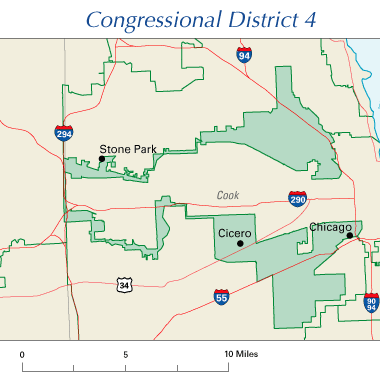OK, So What’s The Problem?
If you missed last week’s installment, take a look, as it summarizes how redistricting in Virginia works. If you’re too busy, the basics on your author: In 2007 I was asked to run a new non-profit effort to reform Virginia’s redistricting system. A group of moderate business leaders had decided to raise funds for the effort. For the next 7 months, I shuttled between my Arlington home and Richmond as Executive Director of the Virginia Redistricting Coalition. I’ll use this series to pose a few basic questions about redistricting reform and explore the philosophical and practical implications of such an effort. As a warning up front, I am not a lawyer. So while I am fairly well-versed in the relevant concepts, don’t take my word for gospel on the legal precepts. I’m also going to assume you’re familiar with the basics: gerrymandering, the Civil Rights Act of 64, reapportionment generally, and the current state of the ‘science’ of partisan redistricting.
Partisan redistricting – is it really a problem? First principles –  what is the problem with partisan redistricting? Per Baker v. Carr and later Gray v. Sanders, modern partisan redistricting efforts do not endanger the effective power of an individual’s vote, nor do they dilute the ability of a constitutionally protected class to achieve representation (post-Voting Rights Act of 65). So we must at least consider whether or not drawing district lines for partisan gain is either constitutionally (or morally) acceptable. The constitutional question remains unsettled – a series of cases has yet to define a standard for determining if a partisan gerrymander is an equal protection violation. (See Vieth v. Jubelirer & Davis v. Bandemer – I’m not qualified to belabor the details.) Without settled case law, this leaves us to ask if there is a public interest in removing partisan influence from redistricting. [Read more…] about Redistricting Reform Part 2
what is the problem with partisan redistricting? Per Baker v. Carr and later Gray v. Sanders, modern partisan redistricting efforts do not endanger the effective power of an individual’s vote, nor do they dilute the ability of a constitutionally protected class to achieve representation (post-Voting Rights Act of 65). So we must at least consider whether or not drawing district lines for partisan gain is either constitutionally (or morally) acceptable. The constitutional question remains unsettled – a series of cases has yet to define a standard for determining if a partisan gerrymander is an equal protection violation. (See Vieth v. Jubelirer & Davis v. Bandemer – I’m not qualified to belabor the details.) Without settled case law, this leaves us to ask if there is a public interest in removing partisan influence from redistricting. [Read more…] about Redistricting Reform Part 2
 n Virginia, nearly 2,000 ballots cast by voters overseas were initially not counted in last year’s general election.
n Virginia, nearly 2,000 ballots cast by voters overseas were initially not counted in last year’s general election.  Eastern half of Virginia, Westerners began calling for a constitutional convention to solve the problem, and the General Assembly soon complied. Delegates to the convention convened in Richmond in early October, 1850 and met for nearly a year.
Eastern half of Virginia, Westerners began calling for a constitutional convention to solve the problem, and the General Assembly soon complied. Delegates to the convention convened in Richmond in early October, 1850 and met for nearly a year.